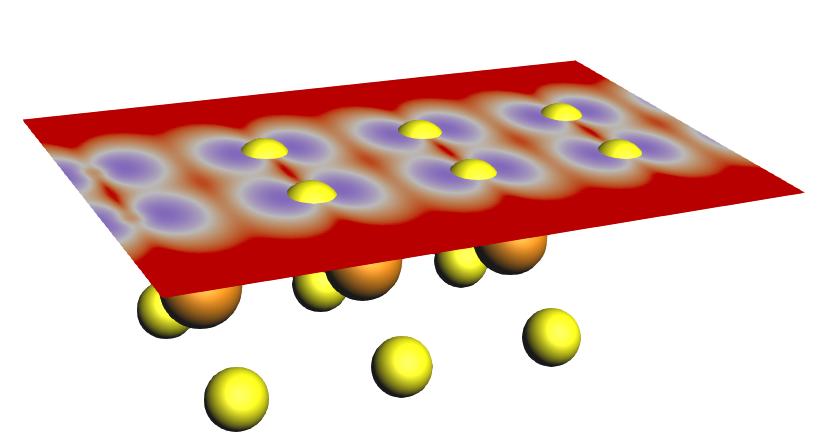MoS2 hydrodesulfurization catalyst
A recent Nature Communication paper characterizes a model MoS2 hydrodesulfurization catalyst compound under operating conditions -high temperature and high pressure- for a model organosulfur compound by combining STM with DFT calculations.
The combined experimental and computational study confirmed that the active catalyst edges become sulfur and hydrogen rich under operating desulfurization conditions. The calculated phase diagram as a function of H2/H2S pressure remarkably uncovers a preference for low-symmetry structures.
An extensive study of the reaction pathways for desulfurization on Au(111)-supported MoS2 suggests that the catalytic cycle starts with irreversible S extraction on the edge site, while reversible H2 adsorption and H2S desorption close the cycle.
According to Albemarle researcher Jaap Louwen the synergy between DFT calculations and experiments were essential to uncover the desulfurization catalyst structure and mechanism under industrially relevant conditions. The BAND option to work with partial Hessians for 2D systems tremendously helped him to establish all the possible reaction pathways for the complex catalytic cycle under different conditions.
These fundamental insights into the catalytic reactions under operating desulfurization conditions will help to further improve this important process to produce clean hydrocarbon fuel from crude oil.

R. Mom, J.N. Louwen, J.W.M. Frenken, and I.M.N. Groot, In situ observations of an active MoS2 model hydrodesulfurization catalyst, Nature Communications 10, 2546 (2019)
Key conceptsBAND catalysis oil & gas Reactivity